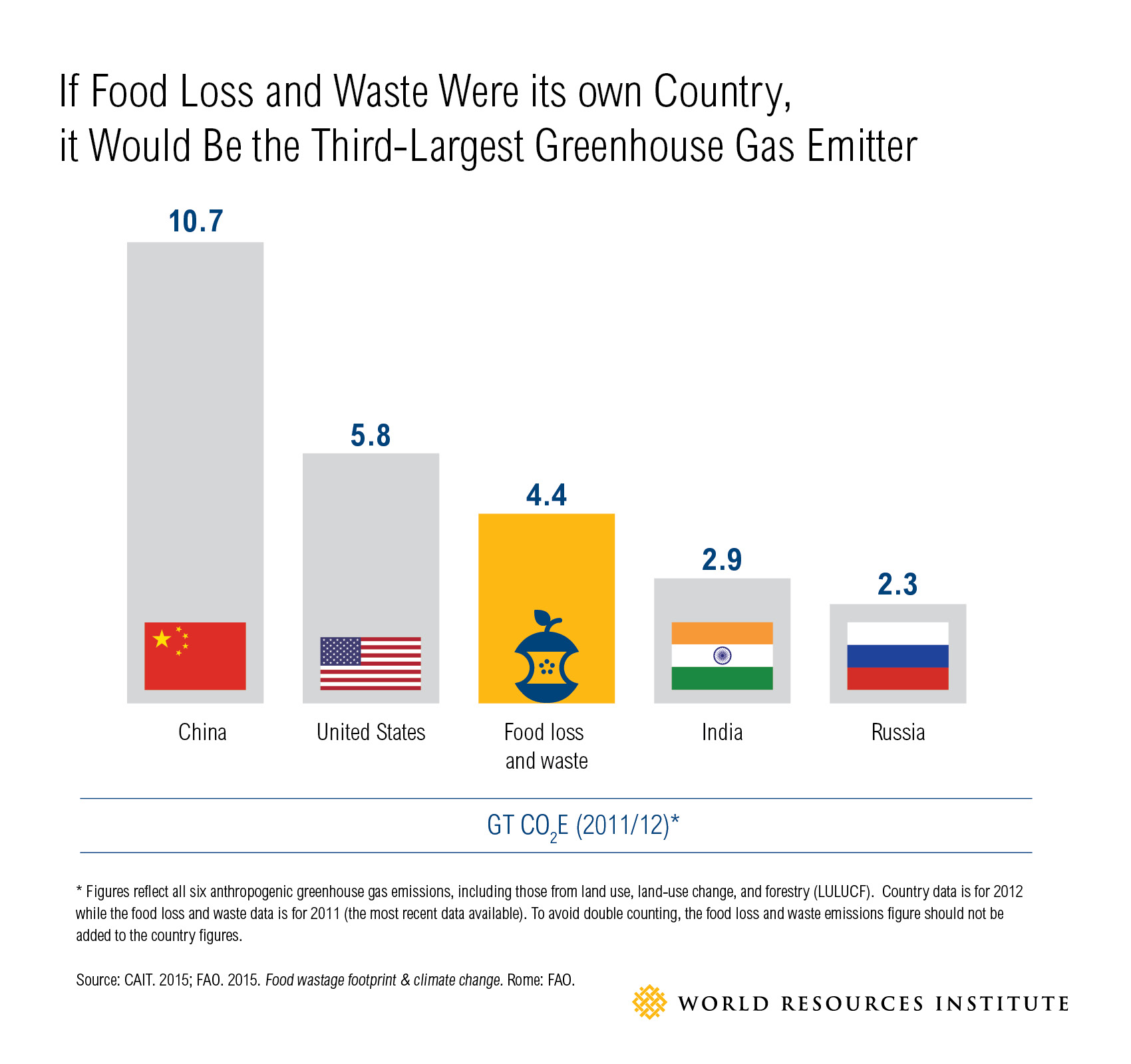We're choosing to look at emissions from food waste within the context of agriculture this lesson (though waste is also covered in Lesson 3), but ultimately, this is one that's hard to really pinpoint to a specific sector because it touches so many sectors. From land use, livestock, transportation, energy, and water - anytime we throw away food, we're throwing away all the embodied emissions in its production, harvest, processing, and transport to reach us. We could talk about food waste at very specific scales, but for our purposes in this lesson, we're going to think about food waste a bit more generally. It could be occurring during production, on its way to the grocery store, at the retail outlets, or in our own refrigerators (insert hand-raising emoji).
We don't hear much about food waste in the context of climate change, but it's really a sleeping giant. Take a look.

